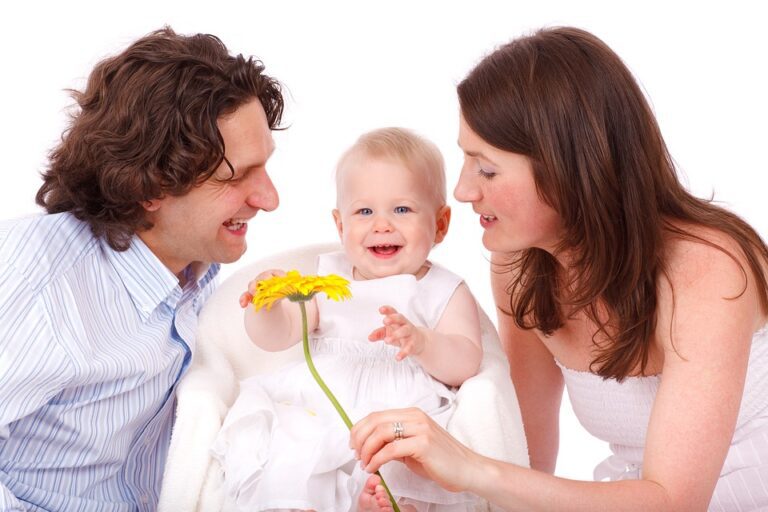
[ad_1]
Building a Happy Home: Positive Parenting Tips for Toddlers
As parents, we all want to create a happy and healthy environment for our toddlers to grow and thrive. Positive parenting is essential for building a strong, loving, and secure home for our little ones. In this article, we will explore some tips and strategies for practicing positive parenting with toddlers, incorporating real-life examples, and taking a storytelling approach to help illustrate these concepts.
Creating a Positive Environment
One of the most important aspects of positive parenting is creating a positive environment for your toddler. This means providing a safe and nurturing space for them to explore and learn. It also means surrounding them with love, support, and encouragement.
Imagine a scenario where your toddler is trying to stack blocks, and they keep falling over. Instead of getting frustrated or scolding them, you can offer words of encouragement, such as “It’s okay, you’re doing a great job! Keep trying, you’ll get it!” This positive reinforcement helps build their confidence and resilience, and creates a happy and supportive environment for learning and growth.
Setting Clear Boundaries
While it’s important to create a positive and nurturing environment, it’s equally important to set clear boundaries and expectations for your toddler. This helps them understand what behavior is appropriate and what is not, and it provides a sense of structure and security.
For example, if your toddler is throwing a tantrum because they want a toy, instead of giving in to their demands, you can calmly explain the situation and set a clear boundary, such as “I understand that you want the toy, but it’s not okay to throw a tantrum. We can talk about it when you’re ready to use your words.” Setting these boundaries in a loving and respectful way helps your toddler learn self-control and empathy, and creates a happy and peaceful home environment.
Effective Communication
Positive parenting also involves effective communication with your toddler. This means actively listening to them, validating their feelings, and using age-appropriate language to explain things to them.
For instance, if your toddler is upset because they fell down and hurt themselves, you can kneel down to their level, hold their hand, and say, “I can see that you’re upset. It’s okay to cry. Let’s clean your boo-boo and put a band-aid on it. After that, you’ll feel better.” This kind and understanding approach helps your toddler feel heard and supported, and fosters open and honest communication in the home.
Encouraging Independence
Another important aspect of positive parenting is encouraging independence in your toddler. This means giving them opportunities to make choices, solve problems, and take on age-appropriate responsibilities.
For example, if your toddler is getting dressed in the morning, instead of dressing them yourself, you can offer them two options for outfits and let them choose. This simple act of independence empowers your toddler and helps them develop decision-making skills and confidence, creating a happy and self-assured home environment.
Conclusion
Building a happy home through positive parenting with toddlers is an ongoing process that requires patience, love, and understanding. By creating a positive environment, setting clear boundaries, practicing effective communication, and encouraging independence, you can foster a strong and loving home for your little ones to thrive.
Real-life Example
One parent, Sarah, shared a story of how she implemented positive parenting with her toddler. Her daughter, Emily, was having a meltdown at the grocery store because she wanted a candy bar. Instead of giving in or scolding her, Sarah calmly explained that they can have a treat at home if Emily is able to make a healthy food choice at the store. Emily was given the option to pick out a fruit or vegetable of her choice, and in return, she got to have a small treat at home. This positive reinforcement not only helped Emily learn about healthy food choices but also showed her that her feelings were heard and respected.
FAQs
1. What is positive parenting?
Positive parenting is an approach to raising children that focuses on building a strong and loving relationship with them, while also setting clear boundaries and expectations, practicing effective communication, and encouraging independence.
2. How can I practice positive parenting with my toddler?
You can practice positive parenting with your toddler by creating a positive environment, setting clear boundaries, practicing effective communication, and encouraging independence. These strategies help foster a happy and healthy home for your little one.
3. What are some benefits of positive parenting for toddlers?
Some benefits of positive parenting for toddlers include building a strong and loving relationship, fostering self-confidence and resilience, promoting open and honest communication, and encouraging independence and problem-solving skills.
It’s important to remember that positive parenting is not about being perfect, but about showing love, understanding, and respect for your toddler as they navigate the world around them. By implementing these positive parenting tips, you can create a happy and nurturing home environment for your little ones to thrive.
[ad_2]